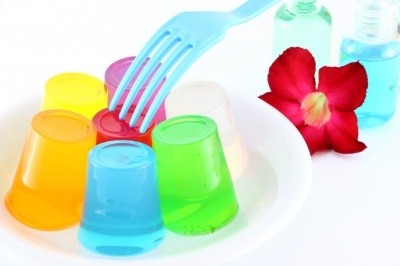
Alternative sources of gelatin to those derived from cattle and pigs came to the fore following various issues and scandals worldwide, associated with their processing of these two major groups of animals. Fish became an important focus because so much seems to be wasted as a result of processing but might yet provide another valuable food ingredient.
Gelatin is a protein which is obtained from the partial hydrolysis of collagen. Collagen itself is extracted from any bones, connective tissue, skin, organs and even intestines from a range of mammals (Johnston-Banks, 1990; Kavoosi et al., 2013). Gelatin has been used for centuries primarily as a gelling agent, thickener, stabiliser, film former and creator of textures in a range of non-vegetarian foods (Irwandi et al., 2009; Gómez-Guillén et al., 2011).
There are some useful reviews that cover the extraction of gelatin from fish, benefits and weaknesses relating to its use as an ingredient and the possibilities of using such as resource as an important food ingredient (Karim & Bhat, 2009).
The film forming capabilities might be one of its more important properties. Unlike the synthetic plastic film forming materials, gelatin can be worked into a variety of packaging structures. It is biodegradeable and environmentally friendly (Nagarajan et al., 2012). It also has the capability of protecting foods from harsher physical conditions such as UV light, oxygen ingress and drying out.
One fascinating application is non-food – serving as a wound dressing with incorporation of non-scale materials for its antimicrobial benefits (Kavoosi et al., 2013).
References
, , , , , . (2009) Fish gelatin: a renewable material for developing active biodegradable films. Trends Food Sci. Tech. 20 pp. 3–16. doi: 10.1016/j.tifs.20068.10.002.
, , , , , . (2009) Extraction and characterization of gelatin from different marine fish species in Malaysia. Intl. Food Res. J. 16 pp. 381–9.
. (1990). Gelatin. In: P. Harris, editor. Food Gel. London: Elsevier Applied Science Publisher. pp. 233–89.
, , . (2013). Mechanical, physical, antioxidant, and antimicrobial properties of gelatin films incorporated with thymol for potential use as nano wound dressing. J. Food Sci. 78(2) pp. 244–50 doi: 10.1111/j.1750-3841.2013.12015.
Karim, A. A., & Bhat, R. (2009). Fish gelatin: properties, challenges, and prospects as an alternative to mammalian gelatins. Food Hydrocolloids, 23(3), pp. 563-576 (Article)
, , , , . (2012). Characteristics and functional properties of gelatin from splendid squid (Loligo formosana) skin as affected by extraction temperatures. Food Hydrocolloid. 29 pp. 389–397. doi: 10.1016/j.foodhyd.2012.04.001.
Leave a Reply